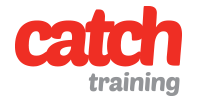The USA Computing Olympiad (USACO) test is a prestigious competition that offers young computer scientists an opportunity to showcase their programming skills. As one of the premier programming contests in the United States, USACO is designed to identify and nurture high school students with exceptional talent in algorithms and coding. In this article, we will explore everything you need to know about the USACO test and provide strategies to excel in it.
Understanding USACO
USACO consists of multiple levels: Bronze, Silver, Gold, and Platinum. Each level is progressively more challenging, with problems that require a deeper understanding of algorithms and data structures. The competition is divided into several contests held throughout the academic year, culminating in the US Open, where the best performers are invited to a training camp. This camp serves as a selection ground for the team that represents the United States at the International Olympiad in Informatics (IOI).
Structure of the Contest
Each USACO contest typically involves three problems that must be solved within a four-hour time limit. Problems are algorithmic in nature, requiring solutions to be both correct and efficient. Participants submit their solutions in C++, Java, or Python, and these solutions are evaluated against a series of test cases. The scoring is based on the number of test cases that pass successfully, and partial credit is awarded for solutions that pass some but not all test cases.
Key Areas of Focus
To crack the USACO test, a participant must be proficient in several key areas:
- Algorithms: Understanding common algorithms such as sorting, searching, dynamic programming, and graph algorithms is crucial. Advanced topics like segment trees, Fenwick trees, and flow algorithms become increasingly important at higher levels.
- Data Structures: Mastery of data structures like arrays, linked lists, stacks, queues, hash tables, and binary trees is essential. More complex structures such as heaps, balanced trees, and disjoint set unions are also frequently tested.
- Problem Solving Skills: USACO problems often require innovative approaches and a deep understanding of the problem constraints. Practicing different types of problems helps in developing this skill.
- Programming Languages: While C++, Java, and Python are allowed, C++ is the most commonly used due to its efficiency and the extensive library support for algorithms and data structures.
Strategies to Excel
- Practice Regularly: Consistent practice is key to success in USACO. Use past contest problems available on the USACO website to understand the type and difficulty of problems. These platforms also offer a wide range of problems for practice.
- Learn from Mistakes: After each contest, carefully review the problems and understand the solutions, especially for the problems you couldn’t solve. Analyzing where you went wrong helps in avoiding similar mistakes in the future.
- Join a Community: Participating in online community forums can be beneficial. These communities offer support, discussion, and resources that can help you improve.
- Attend Workshops and Camps: If possible, attend workshops or camps focused on competitive programming. These can provide intensive training and the opportunity to learn from experienced programmers.
- Optimize Your Code: Writing correct code is only half the battle; it must also be efficient. Focus on optimizing your code to handle the upper limits of problem constraints. This often involves choosing the right algorithms and data structures.
- Time Management: During the contest, managing your time effectively is crucial. Start with the easiest problem to secure some points, then move on to more challenging ones. Ensure you allocate enough time to debug and test your solutions.
Summing up, cracking the USACO test requires dedication, practice, and strategic preparation. By mastering key algorithms, data structures, and honing problem-solving skills, participants can significantly improve their chances of success.




